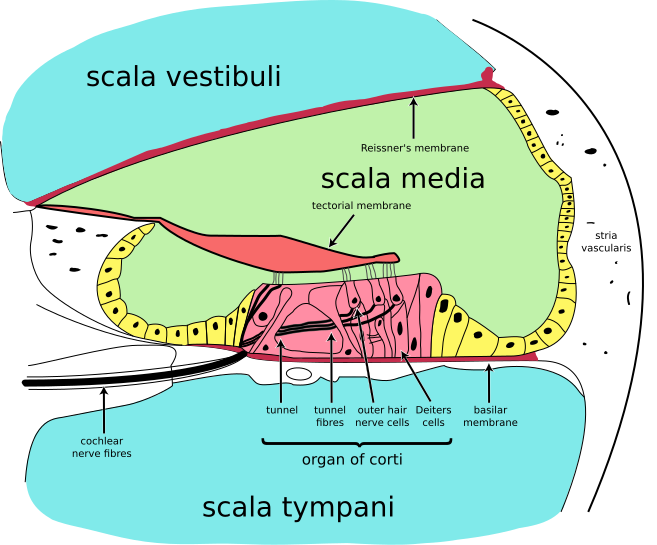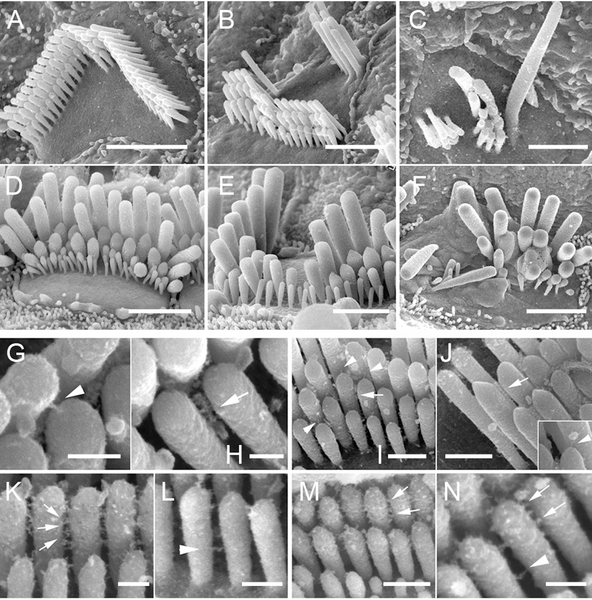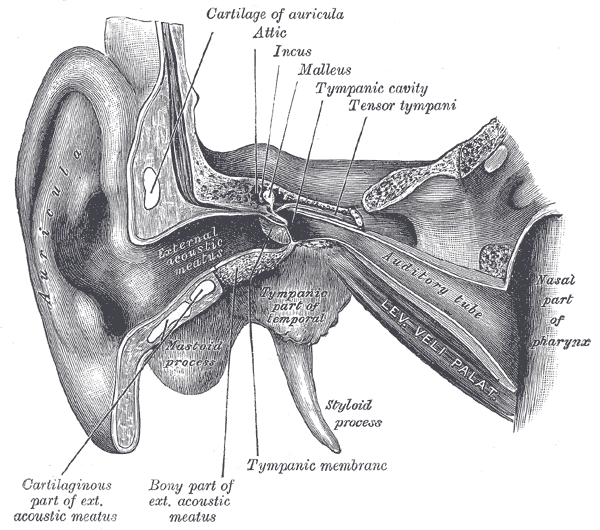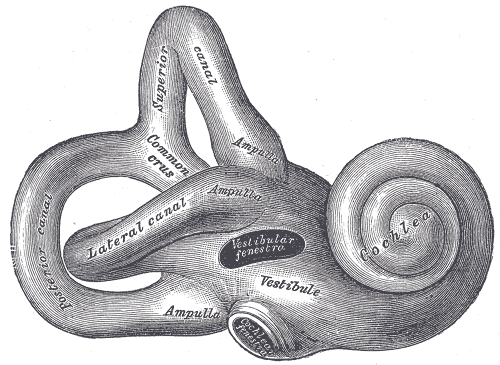We just learned about the
Concha.
On the outer ear we know about:
- The auricle or pinna, which is the main outside part of the ear
- The helix, which is the folded over part around the outside
- The antihelix, which is the Y shaped bump that sticks out
- The antitragus, which is the bump pointing up that is connected to the earlobe
- The tragus, which is the part closest to the cheek that sticks out
- The earlobe, which is the part that hangs down at the bottom
- The intertragic notch, which is the open space between the tragus and antitragus
- The concha, which is the part of the ear that leads right into the inside of the ear.
Another part of the outer ear is the
Ear Canal, also called the external auditoriy meatus, or EAM.
This is the tunnel in your ear that leads to the inner ear.
For a grown up, the ear canal is usually about 1 inch long, and 1/3 of an inch wide.
The ear canal (external acoustic meatus, external auditory meatus, EAM) is a pathway running from the outer ear to the middle ear. The adult human ear canal extends from the pinna to the eardrum and is about 2.5 centimetres (1 in) in length and 0.7 centimetres (0.3 in) in diameter.

(from: wikipedia -
ear canal)
Kid Facts - Blast from the past: Lymphatic Vessel





















